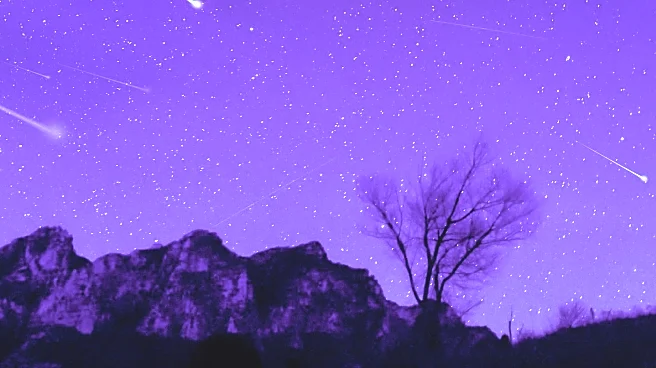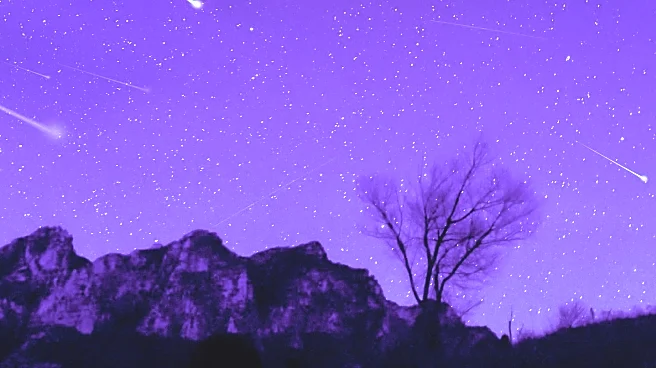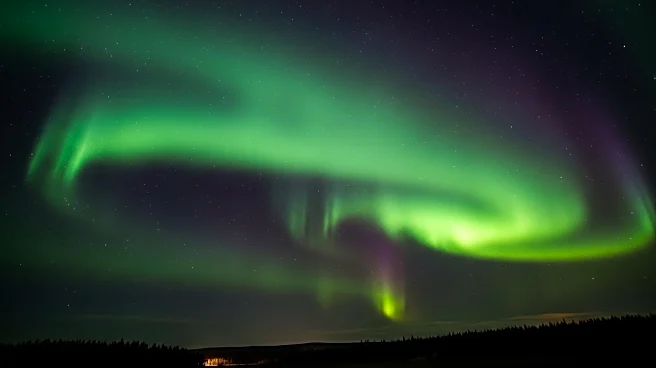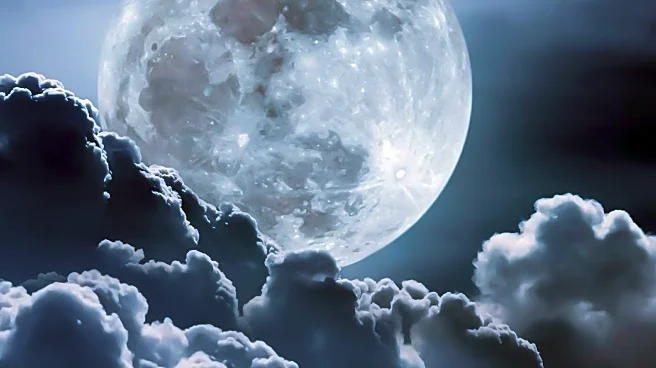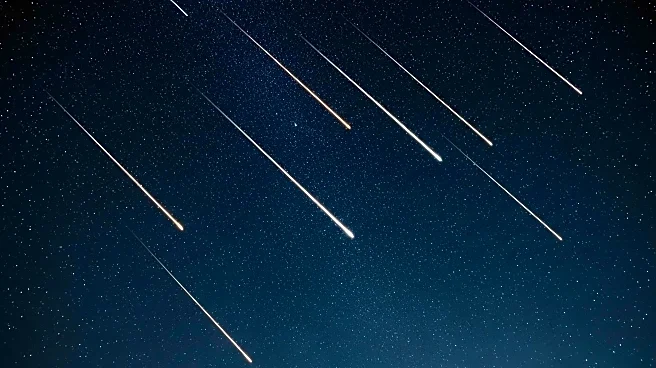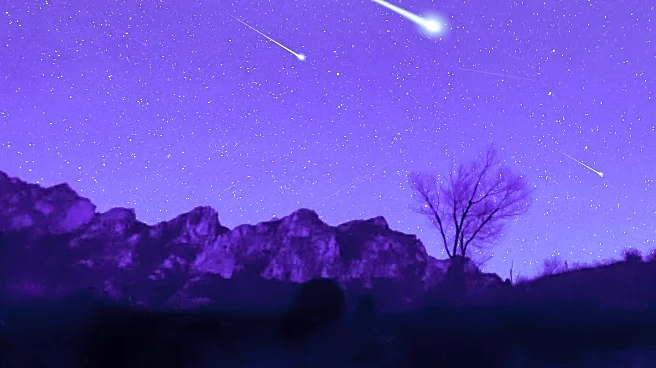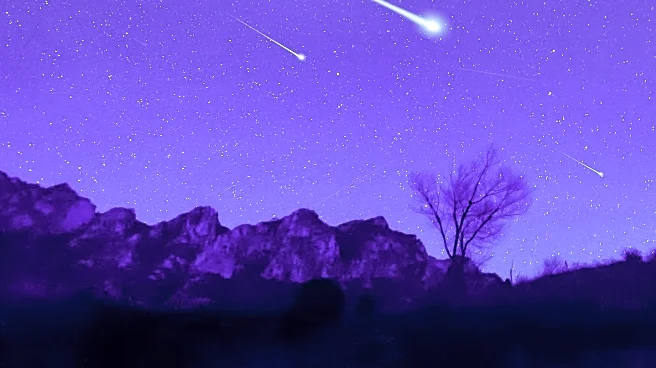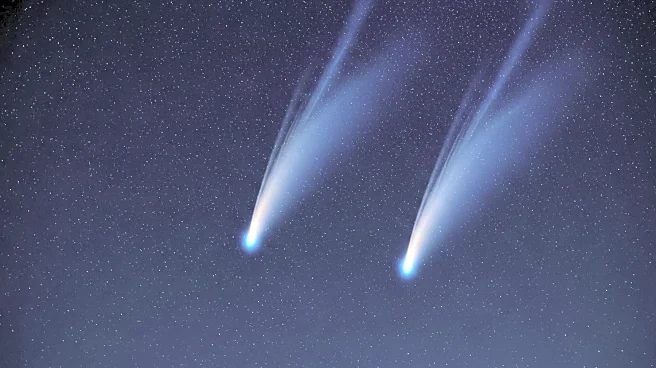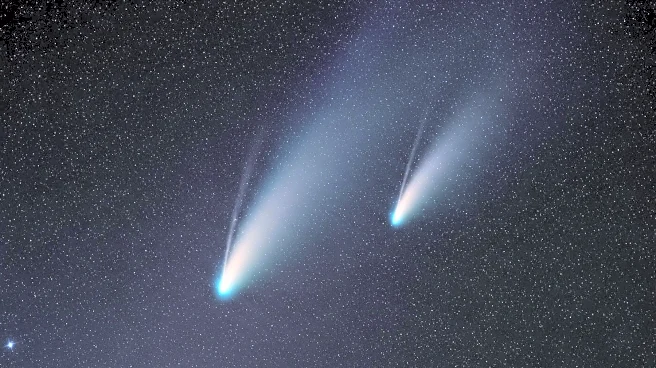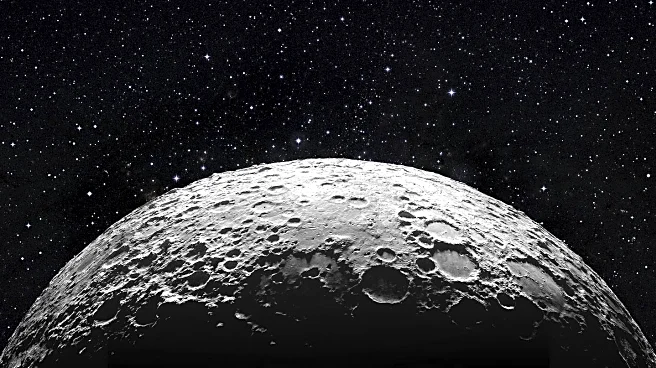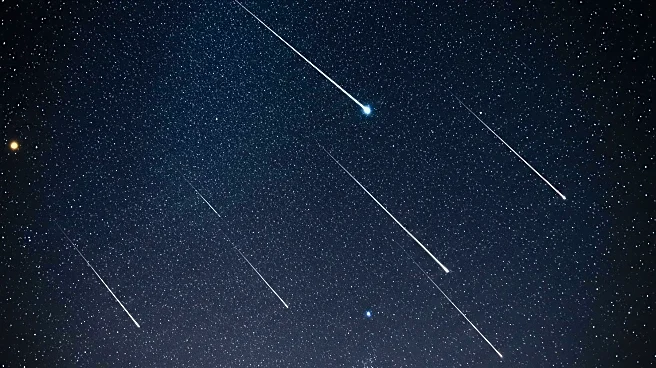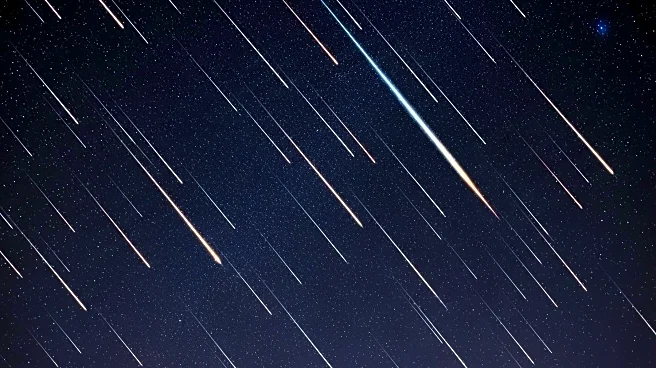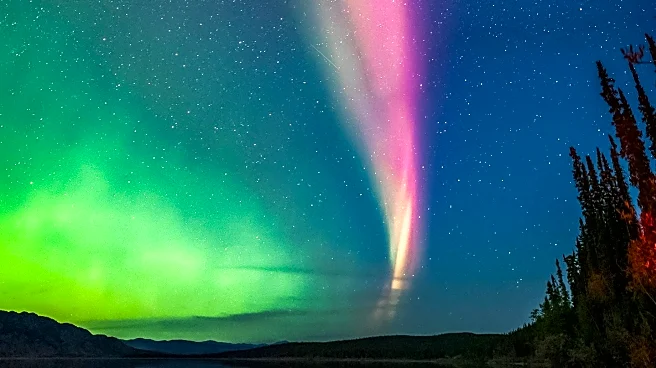What is the story about?
What's Happening?
October 2025 will feature two meteor showers, the Draconid and Orionid, offering skywatchers a celestial spectacle. The Draconid meteor shower, active from October 6 to 10, will peak on the evening of October 8. However, a bright full 'Harvest' supermoon may obscure the visibility of fainter meteors. The Orionid meteor shower, active from September 26 to November 22, will peak on the night of October 21-22 under ideal moonless conditions. This shower is known for fast meteors originating from debris left by Halley's Comet. Skywatchers can expect up to 10-20 meteors per hour during the Orionid peak.
Why It's Important?
Meteor showers like the Draconid and Orionid provide an opportunity for public engagement with astronomy, encouraging people to explore the night sky and learn about celestial events. The Orionid shower, linked to Halley's Comet, offers a connection to historical astronomical phenomena, sparking interest in the science behind meteor showers. These events can also boost tourism in areas with dark skies, as enthusiasts travel to optimal viewing locations. Additionally, the presence of two visiting comets, Lemmon and SWAN, adds to the excitement, offering amateur astronomers a chance to observe rare cosmic visitors.
What's Next?
Skywatchers are advised to find dark locations away from city lights for optimal viewing of the meteor showers. The Draconids are best viewed in the early evening, while the Orionids are most visible after midnight. Observers should allow time for their eyes to adjust to the darkness. The presence of comets Lemmon and SWAN provides additional viewing opportunities, with Comet Lemmon expected to brighten around Halloween. Astronomy enthusiasts can use star charts and apps to track the comets' positions. The meteor showers and comets offer a rich autumn sky experience, encouraging continued interest in astronomy.
AI Generated Content
Do you find this article useful?
